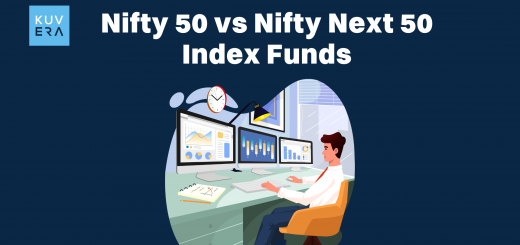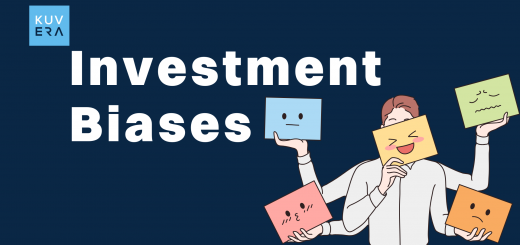2018 has been a tumultuous year so far. While the largest of the large caps have continued to hold and even gain some ground, the small and mid-cap space has seen a correction. For example, the NIFTY Smallcap 100 Index peaked on 15th Jan 2018 and has since lost ~37% of its value in a drawdown that’s already close to 9 months old.

Interestingly, the NIFTY Smallcap 100 Index now is more or less back at its Jan 2008 level.

That’s too much excitement.

Amidst this backdrop, our all-weather portfolio recommendation has held its own quite well.
We recommended the following equity basket in Jan-2017. The funds in our equity basket have zero to minimal overlap and provide a low-cost well-diversified portfolio using low-cost index funds where possible.

Then based on the user’s stage of life risk profile (married, kids, home ownership etc) and duration of goals, we recommend an allocation into Equity and Debt basket above. This is based on the time-tested Mutual Fund separation theorem, which states “any investor’s optimal portfolio can be constructed by holding each of certain mutual funds in appropriate ratios”.
This is how our equity and debt basket schemes have performed,
Since recommending –

2018, Year to date –

Overall our recommended portfolio has held up well to the market turmoil and we can see that diversification is clearly working. Our allocation to large caps and international (US) funds, which seemed contrarian when we made them, have shown their diversification benefits this year.
This is not naïve diversification of naming 3 large cap schemes and 3 small cap schemes and so on and so forth. Our portfolio construction ensures that the investor is exposed to orthogonal sources of risk and thus overall portfolio variance is reduced considerably. The only miss is that we underestimated the pressure on the RBI to raise interest rates which impacted the performance of our long-term GSEC fund vs holding liquid or ultra short-term funds.
Let’s take an example now of a 30-year-old user, with average risk profile and a retirement goal, for which we would recommend a roughly 85% Equity and 15% Debt asset allocation.
The allocation for such a user would be like –

The performance for this asset allocation would be,
Since recommending –

2018, Year to date –

Shown another way, the scheme contribution to returns for the 85/15 equity/debt allocation would be,
Since recommending –

2018, Year to date –

We are happy with the performance of our all-weather portfolio and will continue with the same framework for now. We are making the following changes to keep the portfolio up to date to the latest scheme choices available. Our recommendation algorithms have been updated to reflect these changes –

Over the benefits listed above, the changes will lead to a net reduction of expense ratio of 7 bps in our equity basket and 10 bps in our debt basket.
The new recommendation will start showing in our app and website starting today. If you are following our allocation, then we suggest you stop your SIPs in the existing schemes and start in the new schemes. The existing units already bought, can we be left as is or moved to the new schemes over time after confirming exit load and tax status.
We are closely watching the small-cap space to see when the opportunity is right to start adding some direct small-cap exposure in our equity basket.
For now, we are happy to wait.

Start investing through a platform that brings goal planning and investing to your fingertips. Visit kuvera.in to discover Direct Plans and start investing today.
#MutualFundSahiHai, #KuveraSabseSahiHai!











Anup Dutta
November 16, 2018 AT 16:35
Dear Mr. Rastogi,
I found the article helpful.
Below are my understanding on your recommendation.
The recommendation to change 10Y GSEC fund to reliance liquid fund is a good approach.
Even change ICICI nifty next 50 to UTI NIFTY next 50 may be a good decision, considering both are index fund (comparable return) and the UTI fund has minimum expense ratio and lesser SIP value.
But, I do not understand the reason of recommending Download Data DSP Equal Nifty 50 Fund in place of IDFC Nifty Index fund.
I understand the IDFC Nifty Index fund is superior due to following reasons
1. DSP Equal Nifty fund is a new fund new fund as compared to IDFC Nifty Index
2. The performence of IDFC Nifty Index is superior as compared to it’s counter part in DSP MF
3. IDFC Nifty Index fund has lesser expense ratio.
It will be helpful if you can elaborate the reason for change of this specific recommendation.
Regards
Gaurav Rastogi
November 22, 2018 AT 04:56
Hello Anup,
They are not the same schemes. Nifty index invests in the nifty 50 companies in the same proportion of market cap (it is a market cap weighted index)
DSP Equal Weight index invests roughly 2% in each Nifty 50 company (it is an equal weighted index).
The reason we choose DSP Equal Weight Nifty fund instead of a plain vanilla Nifty index (IDFC) fund is because Equal Weight indices have outperformed their plain vanilla indices globally and in our back test in India as well on a risk adjusted basis.
Hope this helps.
Rakesh
December 12, 2018 AT 11:56
I beg to differ. IMHO, equal weight scheme require minimum 25 out of 50 stocks to perform better than rest to give positive result. This can not happen when Index is managed by targeting few stocks as we have seen in last couple of years. Equal weight works only when there is real broad based buying in market.
Gaurav Rastogi
December 16, 2018 AT 04:58
A difference of opinion is what makes a market vibrant.
In this case, though, there is overwhelming India and international evidence that Equal Weight (EW) indices outperform in all but a few market regimes. And since market regimes themselves are only known in hindsight, it is a better option to invest in EW indices rather than MW indices.
Anup Dutta
November 22, 2018 AT 17:04
Thanks Gaurav for your quick reply and explain the insight.
Pravin
December 22, 2018 AT 06:59
Sir
This concept doesnot provide downside protection.In such case active mgmg may be better than active.
Pl clarify the issue
Pravin
Gaurav Rastogi
December 22, 2018 AT 10:32
It is absolutely hogwash that active management provides down side protection. It does not. Not in global markets and not in Indian markets.
Vivek Mallik
December 22, 2018 AT 12:31
I prefer Parag Parikh Long Term Equity Fund for international exposure along with value investing. Your take.
Gaurav Rastogi
December 30, 2018 AT 08:18
Sure, go ahead with it.
The downside is it is not a dedicated international exposure fund, so you are dependent on PM to call India / Global allocation.
Hari
December 23, 2018 AT 08:16
I have a question.
Instead of liquid find, can we choose ultra short bond fund from Franklin?
Gaurav Rastogi
December 30, 2018 AT 08:16
Sure, you can.
kalai
January 19, 2019 AT 07:25
Why Motilal Oswal Most focused 25 fund included in this Equity portfolio. I can see some considerable overlap with other 2 index funds(UTI NN50 and DSP EQ).
When people claim No downside protection with Index funds, then how to manage downside protection,if i choose to invest only with index funds.
Gaurav Rastogi
February 2, 2019 AT 07:32
MO 25 is included as a concentrated portfolio even though it has overlap with NN50 and N50.
The claim that index funds have lesser downside protection than managed funds is bogus and based on bad stats.
kalai
February 26, 2019 AT 08:08
Can you bit elaborate one downside protection with pure index funds. Do you have any study / back testing to prove this is possible in pure index only funds.
Abhishek
February 26, 2019 AT 14:07
How about having Nifty 100 equal weight in place of DSP nifty equal weight and Nifty next 50? Wont it perform better than nifty 50 and Nifty next 50 combined
Gaurav Rastogi
February 27, 2019 AT 01:42
That’s a good thought. The advantage is it simplifies your portfolio even further – 1 fund instead of two. The disadvantage is you cannot allocate differently between Nifty Next 50 and Nifty 50 if you go with Nifty 100 EW. We like a higher allocation to Nifty Next 50 than Nifty 50 EW. Hope this helps.
Vikas K
March 15, 2019 AT 10:09
What happens to the existing portfolio investments when you come up with an update to the recommended funds? To the existing corpus- is that switched? And to the existing SIPs- do we need to start and start them?
Gaurav Rastogi
March 19, 2019 AT 02:44
Yes, you will need to stop old SIPs and start them in new schemes.
Akhil Kumar
March 24, 2019 AT 16:31
Hi Gaurav,
Thinking of investing in the DSP Equal Nifty50 fund by redeeming my active largecaps. Couple of questions here
1. Read a Forbes article regarding Equal weight indices for the US market. Will it work in the Indian market since it’s heavy with 4-5 giant companies creating the alpha?
2. Not great returns over the past year. How many years do u intend to keep this in the Kuvera recommend portfolio before we see returns?
Thanks
Gaurav Rastogi
March 28, 2019 AT 03:23
Hello Akhil,
Equal Weight (EW) index out-performance over Market Weight is seen in pretty much every market globally including US. Even in Indian context, EW Nifty index outperformed Nifty 50 (MW) in 11 of the 17 years since we have data. As Indian markets become less and less liquidity driven and more efficient in processing information, we expect them to behave more and more like other global markets. Last year MW did outperform EW, but the odds are good in a 5+ year holding period that EW will do significantly better.
Regards
Gaurav
Pankaj Tiwary
April 6, 2019 AT 09:36
Hi Gaurav,
Where can we find your recommended portfolio in the app? Pl advise.
Gaurav Rastogi
April 8, 2019 AT 08:52
You can find it once you plan for goals on Kuvera. It will be recommended to you at the end of goal planning.
VIRAL
April 20, 2019 AT 09:57
Can an Index fund sell its stock and hold cash when market is falling or they have to remain invested ?
Gaurav Rastogi
April 22, 2019 AT 01:21
No Viral, Index funds will always remain invested. That is the whole idea, they don’t try to time the market.
Vishal
April 30, 2019 AT 13:47
Equal Weighted Nifty Index generates 1% higher return then Nifty as per white paper from NSE. However since managing it is more work, DSP charges 0.35% expense fees. so the net gain will be around 0.65% over Nifty.
vasudeva chetty pakala
June 1, 2019 AT 18:09
Hi Gaurav , very good basket of funds .But as an investor if I thought of investing part of the recommended amount required for goals created then which percentage of amounts in each fund can be a good feature that can be added in app.
Second when one wants to rebalance their portfolio say 70%equity and 30% debt what you recommend to reduce or increase in equity among the recommended.
Gaurav Rastogi
June 3, 2019 AT 01:24
Thanks for the feedback Vasudeva.
You can use the “Tag Goal” feature to assign percentages to each goal. As a default, we will allocate percentages based on a “Unified Goal Planning” model.
Rupesh
July 22, 2019 AT 05:54
I wanted to bring to your notice that in the ideal portfolio, during the last update, you had recommended removing DSP 10-year GSEC fund with Reliance Liquid Fund to bring down the cost.
But since then DSP 10-year GSEC fund has given a return of 16.5% which is more than double of the returns by Reliance liquid fund. I am curious to know your say because none of the comments on the blog post is raising this question.
Kiraninder Brar
August 8, 2019 AT 12:36
Hi Gaurav, thanks for your nice article. Request suggest similar plan for people above 50 year who wants to invest in equities for next 10 yr and then convert them into SWP for regular income of about 1 lac per month. Thanks
Gaurav Rastogi
August 22, 2019 AT 06:33
For advice please email us at support@kuvera.in and we will respond there.
Bhavin Gandhi
July 26, 2020 AT 11:05
Ideally no over lap or very less over lap of actual good for diversification thanks for such great plan.
Is any change expected in portfolio in recent future ?
Bhavin Gandhi
August 22, 2020 AT 18:00
Gaurav your confirmation on any probability of change in portfolio would be appreciated.
Let me say it’s one of the best platform with keep it simple as principal
gaurav tewari
August 16, 2020 AT 02:34
I think you are first person in India who recommends portfolio diversification, right asset allocation with minimal costs. I have used other platforms (almost all of them) and see that most of the other players offer direct funds only because of competition and not to actually save money for the investors. In-fact most of them do not even recommend index funds. I see that you were the first one who started recommending index funds openly in India. I firmly believe in your philosophy your “putting client’s interest first”. In the true sense i see that Kuvera is the only platform performing it’s fiduciary duty init’s truest sense. Proud to be a Kuverian!!
Gaurav Rastogi
August 17, 2020 AT 03:12
Thanks Gaurav, appreciate it
Shubham Malik
May 21, 2021 AT 17:34
How would the investor get to know that there is rebalancing in the portfolio of goal?
And would the new portfolio and old portfolio, both would be considered tagged to the same goal?
Just want to know, won’t it create confusion at the time of goal completion for the user which funds to redeem from?
And, what do you suggest leave the old portfolio as it is or liquidate it and re-invest lumpsum in the new portfolio?
Raunak
May 22, 2022 AT 00:48
It’s been almost four years since this was posted and a lot has changed. Any changes in the recommendations or should a new investor follow this ‘as is’